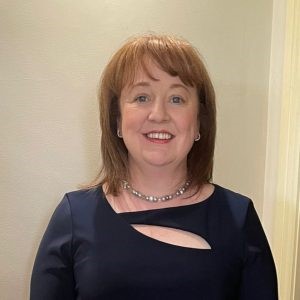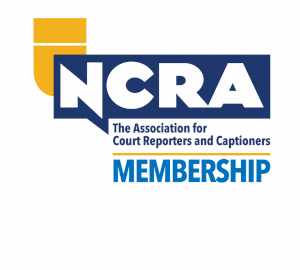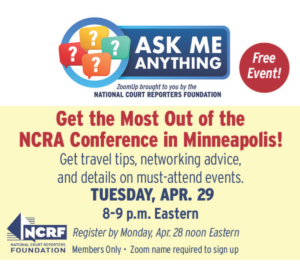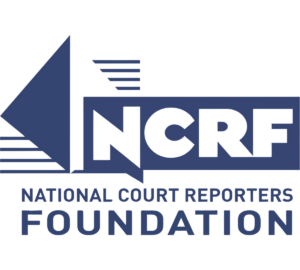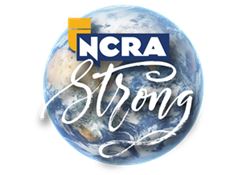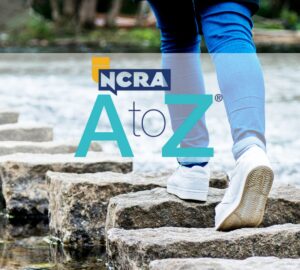By Merilyn Sanchez
In September, 15 reporters and guests traveled to Australia and New Zealand, with many of us crossing the International Date Line for the first time. While in the two countries, we experienced a combination of professional and cultural visits.
Of course both countries speak English, so we communicated easily. It was very interesting to explore the commonalities and differences in the judicial systems of the United States, Australia, and New Zealand.
Jana Moa was our hostess for the visit in Sydney. In the 1980s, she had a “study leave” equaling two mornings a week to train and study. She studied steno theory for one year and then built up her speed. She started off as a court officer (like a judicial advocate-type job). After 12 months of training, she went to court half days and found it “hard to be fast.” Jana passed the government test, which was 180 wpm for Q&A. At that time, the court had pen writers who were employed by the government.
Kaylene Scotson-Tairua, RPR, CRR, CCP, was another reporter we met in Sydney. (Scotson-Tairua also passed the test for Federal Certified Realtime Reporter from the United States Court Reporters Association.) She began her court reporting career in New Zealand on a standard typewriter; she said she had 250 “briefs” and would type as fast as possible. She printed the transcript a page at a time in the courtroom. She would use pen shorthand for sentencing.
After Scotson-Tairua spent two years in the New Zealand system, that country piloted the “American System”, namely, steno machines. Tutors who knew steno taught two to four reporters to switch to the steno system. Prospective court reporters had to take a competency test before being accepted for the program. They spent three months in theory and then trained on manual steno machines. By 18 months, candidates had to pass a test at 180 wpm. Scotson-Tairua, who was one of those initial trainees, then went to do court work.
The new steno system was much quieter. Some litigants wondered if the record was being taken down because they didn’t hear them typing. The courts brought in electronic steno machines. Each reporter had four sessions per day. Two reporters would alternate shifts (i.e., 1 & 3, 2 & 4 p.m.). In New Zealand, scopists would check their work.
In Sydney, the reporter training lately has updated to Windows 7 and Word 2010. They use CaseviewNet wirelessly with the attorneys providing their own iPads. The reporters use audio sync plugged into their laptop.
Scotson-Tairua moved to the United States where she did closed captioning and worked in court. She moved to Australia in 2012 and has been working in the courts in Sydney since then.
In Australia, they have what they call “runners” in court. These are steno reporters with 30-minute shifts. They have 30 minutes to write and 30 minutes to transcribe. The scopists are also court reporters. Realtime teams work two weeks on and two weeks off. The Australian courts have a lot of daily copy cases, so the reporters merge their files, usually at noon and the end of the day, but also whenever they can. The Australian reporters use Case Catalyst and export it to Word for transmittal to the clients. Audio recording is used as a backup. Court starts at 10 a.m. and adjourns at 4 p.m. Daily production of the transcript must be completed by 6 p.m.
In New Zealand, Sheryl Ham and Paula O’Flynn graciously met with us at the National Transcription Service. The NTS was created in 2007 to increase the Ministry of Justice’s capacity to provide more transcription for more courts across all jurisdictions. It marked the start of a gradual transition from a local to a national way of delivering transcription services. It took five years to establish the service. The National Transcription Service employs 125 “court reporters” nationally. Although NTS calls them court reporters, they are what most of us would consider transcriptionists. These people are responsible for transcribing many different types of court proceedings. NTS reporters must type in excess of 80 wpm and have a high level of communication skills. There are 56 regional courts in New Zealand.
To be a transcriptionist for NTS, the person must type 70 wpm, have good communication skills, possess great attention to detail, navigate software, remain composed, and demonstrate flexibility under pressure. The typists participate in an intense six-week training program and then obtain a restricted license. NTS gives three categories of licenses: advanced (95-100 percent accuracy), full (90-95 percent), and restricted (below 90 percent). The transcriptionists holding the restricted licenses must have all their work peer-checked before it is considered complete and sent offsite. There is a senior quality advisor and four quality evaluators who assess and mark both contemporaneous and non-contemporaneous work.
For the Record is used for recording the proceedings. A court taker in the courtroom logs notes for the audio recording and is the eyes and ears in the courtroom. The court takers use a transcription service manager to transcribe the audio. Then, two transcribers working as a tag team provide a transcript with a 30-minute delivery. The transcribers are listening to what is happening in the courtroom and typing the transcript.
Contemporaneous transcription is delivery within 30 minutes of the conclusion of court proceedings. Noncontemporaneous delivery can be anywhere from eight hours to five days. The audio files are saved to a main server, and they can be accessed in multiple locations without restricting bandwidth to other users.
In both countries the court reporters are salaried employees. There is no transcript income for the employees.
In Australia, the format is 51 lines per page, single spacing (double spacing between speakers). All text is blocked left. The Australian definition of verbatim allows the court reporters to edit out pleasantries. Parties are listed by their last name only. There are no cover or certificate pages on the transcripts. The judge is designated as His Honor or Her Honor. All participants bow to the judge when entering and exiting the courtroom. Robes and wigs are required for councilors. The defendant rises for jurors.
Jury voir dire is very different in Australia and New Zealand. In both countries, the prospective jurors give their name, address, and occupation only. Each side gets three peremptory strikes. They have 12 jurors for a trial. There must be a minimum of 11 jurors to reach a verdict and all verdicts must be unanimous.
In Australia, steno notes are kept for five years and can be audited. Once a year, the steno notes are compared to the audio. This quality assurance monitors the reliance on audio. The steno notes can be subpoenaed. Reporters do stop proceedings if necessary. The first six months’ work is audited, which provides a good learning opportunity.
The NTS in New Zealand has a 251-page style guide, which includes template examples for formatting. They use the courts, their computer system, exhibits, and Google as research tools to prepare the transcripts. NTS archives the audio files. They only work in drafts. The transcript is not final until the judge signs off on it.
According to our guide, NTS was responsible for transcribing 40,316.5 hours of court proceedings from June 2013 to June 2014. To transcribe 10 minutes of taped proceedings took 23 minutes. A good average is 10 minutes of tape equals 30 minutes of transcription time.
All transcription takes place in the offices of NTS. Security keeps this from being a home-based business. Three to four transcriptionists are needed for contemporaneous transcripts in addition to team leaders, a region manager, and office secretary. Contemporaneous transcripts are verbatim. Noncontemporaneous transcripts are slightly abridged. The salary range for a transcriber is $45,000 to $59,000. They work from 8 a.m. to 5 p.m. and receive vacation and sick leave.
Just as in the United States, the numbers of reporters are dwindling in both countries. In Australia in 1966, there were 75 men and 25 women working in the courts as reporters, and one was a steno reporter. In 1988, reporting services were merging with sound recording. In the early 80s, when CAT was introduced, pen writers were retrained on machines with the last class conducted in 1997. During the transition period, 10 pen writers passed the tests. The training consisted of approximately one year of theory and one year of speedbuilding. Reporters could test out early.
In the New Zealand court system, there are only four steno reporters left.
In 2008, the Australian court system started contracting reporters, and it no longer recruits or provides in-house training of reporters. The Australian School of Court Reporting has now closed, and the only way for someone to learn to be a steno reporter is online training. Today there are 70 court reporters, and only five are men.
Merilyn Sanchez, RMR, CRR, is a reporter in Phoenix, Ariz. She can be reached at merilyn@msanchez.net.







